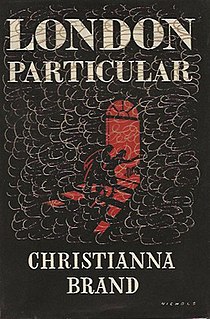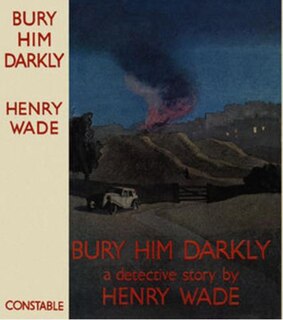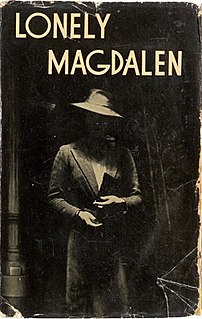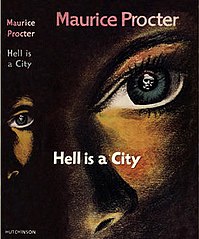
Detective fiction is a subgenre of crime fiction and mystery fiction in which an investigator or a detective—either professional, amateur or retired—investigates a crime, often murder. The detective genre began around the same time as speculative fiction and other genre fiction in the mid-nineteenth century and has remained extremely popular, particularly in novels. Some of the most famous heroes of detective fiction include C. Auguste Dupin, Sherlock Holmes, and Hercule Poirot. Juvenile stories featuring The Hardy Boys, Nancy Drew, and The Boxcar Children have also remained in print for several decades.
The police show, or police crime drama, is a subgenre of procedural drama and detective fiction that emphasizes the investigative procedure of a police officer or department as the protagonist(s), as contrasted with other genres that focus on either a private detective, an amateur investigator or the characters who are the targets of investigations. While many police procedurals conceal the criminal's identity until the crime is solved in the narrative climax, others reveal the perpetrator's identity to the audience early in the narrative, making it an inverted detective story. Whatever the plot style, the defining element of a police procedural is the attempt to accurately depict the profession of law enforcement, including such police-related topics as forensic science, autopsies, gathering evidence, search warrants, interrogation and adherence to legal restrictions and procedure.
Michael Francis Gilbert was an English solicitor and author of crime fiction.

Quai des Orfèvres is a 1947 French police procedural drama film based on the book Légitime défense by Stanislas-Andre Steeman. Directed by Henri-Georges Clouzot the film stars Suzy Delair as Jenny Lamour, Bernard Blier as Maurice Martineau, Louis Jouvet as Inspector Antoine and Simone Renant as Dora.

The Evidence is an American police procedural drama that aired on ABC from March 22 to July 1, 2006. The series starred Orlando Jones, Rob Estes, Anita Briem and Martin Landau.

Smallbone Deceased is a 1950 mystery novel by the English author Michael Gilbert, published in the United Kingdom by Hodder and Stoughton and in the United States by Harper & Brothers. A practising lawyer himself, Gilbert made the setting of the novel a London solicitor's office. It was Gilbert's fourth novel and, like his three earlier ones, features Chief Inspector Hazlerigg. The novel was well-received and has regularly appeared in "Top 100" crime lists. Some critics consider it to be Gilbert's best work.

Death of Jezebel is a 1948 mystery crime novel by the British author Christianna Brand. It is the fourth entry in the series featuring the fictional police detective Inspector Cockerill, and sees him working alongside Inspector Charlesworth a character from Brand's debut novel Death in High Heels.

London Particular is a 1952 mystery crime novel by the British writer Christianna Brand. It is the fifth in a series of novels featuring her fictional police detective Inspector Cockrill and also portrays another of her characters Inspector Charlesworth. It was published in the United States in 1953 under the alternative title of Fog of Doubt.

Tour de Force is a 1955 mystery crime novel by the author Christianna Brand. It was the sixth novel in a series featuring the fictional police detective Inspector Cockrill. It was the last full-length novel in which Cockrill appears, although he features in some short stories. His sister Henrietta also features in the 1957 novel The Three Cornered Halo which uses the same setting as this work.

Constable Guard Thyself is a 1934 mystery detective novel by the British writer Henry Wade. It was the third in a series of seven novels featuring the character of Chief Inspector Poole, although it was preceded by the 1933 short story collection Policeman's Lot in which seven of the twelve stories had feaured Poole. After his more experimental novel Mist on the Saltings Wade returned to the traditional detective model.

Bury Him Darkly is a 1936 mystery detective novel by the British writer Henry Wade. It was the fourth in a series of seven novels featuring the character of Inspector Poole. Along with the following Poole novel, Lonely Magdalen, it marked a shift towards more realistic police procedurals that has been described as pioneering. Superintendent Fraser, who appeared in Wade's fist novel The Verdict of You All, also appears as one of the characters.

Lonely Magdalen is a 1940 mystery detective novel by the British writer Henry Wade. It was the fifth in a series of seven novels featuring the character of Inspector Poole, published during the Golden Age of Detective Fiction. The book focuses more closely on police procedural than the traditional puzzle format. There was a thirteen year gap between this and the next entry in the series Too Soon to Die.

Gold Was Our Grave is a 1954 mystery detective novel by the British writer Henry Wade. It was the seventh and last in a series of novels featuring the character of Inspector Poole, published during the Golden Age of Detective Fiction.

Fear Comes to Chalfont is a 1942 detective novel by the Irish writer Freeman Wills Crofts. It is the twenty third in his series of novels featuring Inspector French, a prominent figure of the Golden Age of Detective Fiction. Like much of the author's work it combines a traditional mystery with a police procedural.

Inspector French's Greatest Case is a 1924 mystery detective novel by Freeman Wills Crofts. It in his series of novels featuring Inspector French, a Scotland Yard detective of the Golden Age known for his methodical technique. Like much of the following series the plot mixes the traditional form of the puzzle mystery with that of a police procedural. French has to carefully study railway and shipping timetables and crack a cipher in order to solve his case.
Mystery in the Channel is a 1931 detective novel by Freeman Wills Crofts. It is the seventh book in his series of novels featuring Inspector French of Scotland Yard, a prominent figure of the Golden Age of Detective Fiction known for his methodical technique. Like much of the series it features elements of police procedural, particularly the painstaking breaking down of alibis. It was published in America the same year by Harper under the altered title Mystery in the English Channel.

The Cheltenham Square Murder is a 1937 detective novel by the British writer John Bude. It is the third in his series of novels featuring Superintendent Meredith. It features a closed circle of suspects as was popular in the genre of the decade as well as elements of police procedural in the style of the Inspector French novels. in In 2016 it was reissued by the British Library Publishing as part of a group of republished crime novels from the Golden Age of Detective Fiction.
Harry Martineau is a fictional British police detective created by Maurice Procter. He is a Chief Inspector in the industrial Northern city of Granchester, which was inspired by Manchester. Procter, himself a former police officer, wrote fourteen novels in the series published between 1954 and 1968. Martineau has been described as a transitional figure in detective fiction standing between the Golden Age detectives such as Ngaio Marsh's Roderick Alleyn and Josephine Tey's Inspector Grant and the newer fashion for police procedurals.

The Midnight Plumber is a 1957 crime novel by the British writer Maurice Procter. It is the second in his series featuring Chief Inspector Harry Martineau, set in the Northern industrial city of Granchester. It was published in the United States by Harper the following year.

Hell Is a City is a 1954 crime novel by the British writer Maurice Procter. It was the first in a series featuring Chief Inspector Harry Martineau, set in the Northern industrial city of Granchester. It takes the form of a police procedural, and marked a transition away from the traditional Golden Age detective novel. Published by Hutchinson, it was released in the United States by Harper the same year under the alternative title Somewhere in This City.
















